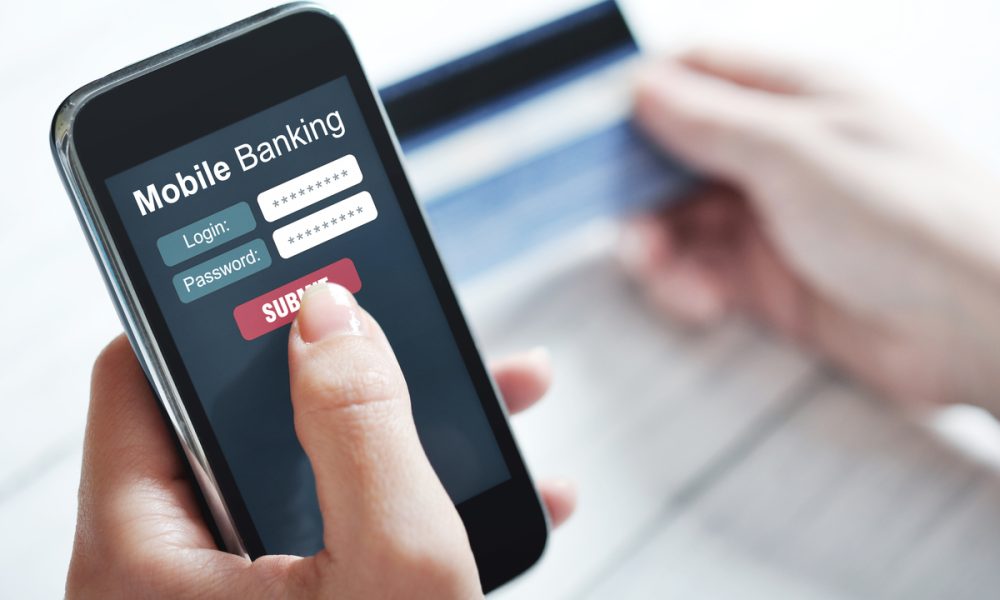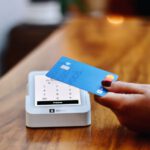In a year that’s seen PYMNTS readers stuffing themselves with news about the ongoing digital shift, while also enjoying a hefty helping of connected economy advancements, it only seems fitting to use this occasion to honor the many parts and pieces of the payments puzzle that keep it all running smoothly (at least most of the time!) and give thanks for the possibilities they’ve unleashed.
1. Apps & Mobile Banking
At this point, it’s almost impossible for most of us to remember what life was like in the “BC era” (Before COVID), given the breadth and scale of digital developments that have permeated so many facets of our lives and daily routines.
Perhaps nowhere is this more noticeable than in the growth of mobile banking and payments apps that have become permanent — and prominent — features on the home screens of our personal devices.
Fast, flexible, personalized and secure, the ability to pay and be paid has never been so good, and things are only going to get better as FinTechs, large banks, local credit unions and more are all constantly pushing the innovation envelope to make the payments experience a little bit better.
And yet, we take it all for granted and growl when it doesn’t work — or even work quickly.
“Now, all of a sudden, consumers can get a text message on their cell phone and make a payment from there,” Paymentus President and CEO Dushyant Sharma said in a recent interview with PYMNTS. “Or if I put my kids to bed late at night and I realize I have to make payment, I can do it there and then. I have multiple options, and I don’t have to wait to call the next day or go to the bank, make a payment, and then call the billing company and say, ‘Please don’t charge me a late fee.’”
The holiday season is the ultimate personal payments field test period — for the next six weeks it will be stress-tested to a degree that was unimaginable only a few years ago, while it seamlessly facilitates what’s sure to be another year of record volume and transactions.
2. Buy Now, Pay Later
Speaking of volume, the enormous and far-reaching BNPL story has generated a huge volume of coverage that has not only been a gift of sorts to PYMNTS, but has provided an endless stream of fascinating twists and turns involving consumers, retailers, regulators and, of course, a range of BNPL-providers offering up installment plans in unprecedented numbers.
Over the year, the uptake and availability of BNPL plans have been in a neck-and-neck race, fueled by dual demand from consumers and merchants. The result has seen over 200% growth in the category, with PYMNTS data showing 11% of total U.S. consumers have used BNPL at least once this year, led by a 62% increase in young 18- to 24-year-old consumers and a whopping 98% spike in BNPL plan uptake from customers age 55 and up.
To meet this burgeoning demand — and capture their share of it — a mix of pure-play providers, legacy lenders and global payment processors have entered the market to make plans available to more people in more places than ever before, including both online, in-store and at the point of sale. The product has also grown well beyond its retail origins, and now is being used to pay for larger items with longer terms than 3 to 6 months including things like vacations, elective surgery and event caterers.
To be sure, this level of growth has not gone unnoticed by regulators, who are still actively trying to assess the situation and de-escalate the risk that rising BNPL balances might pose to the system.
That said, any effort to slow things down will surely be met with resistance as this new way to pay has almost single-handedly kept some merchants afloat, and in turn provided much-needed economic growth.
People also read: Debit Cards Seek to Broaden BNPL Ecosystems
3. Social Commerce
Only days ago, the largest retailer in the country announced that, after a year of testing, Walmart was literally doubling down on its social commerce experiment and adding twice as many livestreamed shopping events on every social media platform, including its latest edition, Twitter.
In unveiling its upsized plans, which will begin Sunday (Nov 28) ahead of the equivalently upsized Cyber Week, Walmart U.S. CMO William White was blunt in his affection for this hot new retail channel.
“We believe the future of retail lies in social commerce,” White said. “The success of these livestream events and growth of our business are telling us that we’re headed down the right path,” he added — a path that is clearly being blazed by the youth of the world who live, learn, laugh and also shop on their phones.
To that point, PYMNTS data have shown that there is still miles of room to grow for streaming commerce as only a tiny fraction of the 1 billion plus active users on TikTok each month actually buy anything off the platform itself — a massive disconnect that merchants and marketers the world over are eagerly looking to change, both in the U.S. and internationally.
As much as social commerce on existing social platforms is still in its infancy, the digital diehards of the world have already moved on to the next big thing, even though the current big thing is still relatively small.
Meta CEO Mark Zuckerberg, for example, is so convinced about the potentialities of the Metaverse that he renamed his company.
“The creative economy and commerce tools are still nascent, and there should be an opportunity for millions more people to make a living doing the work that they love,” Zuckerberg said with his eye to the future.
In the meantime, the expansion and normalization of livestreamed social shopping is set to expand, thanks in no small part to the seamless purchase and payments experience that is embedded into the process, keeping the experience fun and friction-free.
4. The Consumerization of B2B
In keeping with the deeply scientific principle of “monkey see, monkey do,” the spillover effect of consumers — spoiled for choice in the digital payments world — demanding the same level of speed, connectivity and convenience in the workplace has been an undeniably trend this year.
This so-called “consumerization of B2B” is not only experiencing remarkable growth, it is changing entire workflows and bettering the lives (and productivity) of long-suffering finance teams who are ridding themselves of reams of tedious manual tasks and paperwork.
“Digitizing operations and having more flexible payment options and choices for customers has been a huge innovation for SMBs,” said TreviPay Chief Executive Brandon Spear in a September interview with PYMNTS on exactly that topic. “It’s helped them garner more business and a larger share of wallet.”
Read the full article: As SMBs Invest in Digitization, Consumerization of B2B Commerce Takes Shape
This spate of back-office upgrades not only mimics the user experience consumers have grown accustomed to on their personal devices and are increasingly demanding at work, they have also proven to be as good for business as they are for morale.
For example, one PYMNTS study, “The Digital Transformation of Main Street SMBs,” showed how these investments were paying off, with nearly 70% of respondents that had made digital and touchless payments innovation expecting their revenues to be higher this year than they were in 2019.
5. Crypto Everywhere
It would be hard to overstate the growth and impact that the advance of digital currencies is having on the payments space, both for consumers and businesses, dealing amongst themselves and with each other.
Although crypto usage still only accounts for a tiny fraction of the overall payments strata, its growth trajectory and dominant share of the daily discourse give it an outsized influence.
In the past week alone, PYMNTS has chronicled bitcoin and crypto’s expansion as a means of purchasing goods and services into new industries, including private jets, classic car auctions, and even an unsuccessful bid to buy a rare copy of the U.S. Constitution.
While there is still plenty of room to go, crypto’s irrefutable move into the mainstream has even caused some doubters to have a change of heart, at least as far as bitcoin is concerned, and reverse their stance.
“Crypto obviously means a lot of different things to a lot of different people,” Stripe Co-founder and President John Collison said at the FinTech Abu Dhabi festival this week, three years after his company dropped support for bitcoin due to volatility and inefficiency in conducting ordinary transactions.
At the other end of the spectrum, Square and its co-founder/CEO Jack Dorsey continue to be unwavering backers of bitcoin, not only enabling its use for payments between peers via its CashApp platform, but also moving towards accepting it at its point-of-sale terminals.
Ahead of that, bitcoin-linked debit and credit cards have already bridged the spending gap, even though purists would argue that isn’t actually transacting in digital dollars, as much as it is digital dollars securing an underlying transaction.
Either way, it is a safe bet to predict that at this time a year from now, cryptocurrency payments will have exponentially grown and spread to new industries and venues, as sure as we’ll be tucking into turkey again come the end of November.







